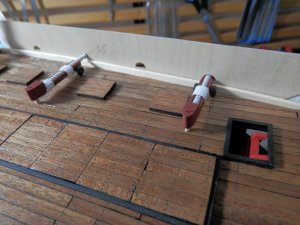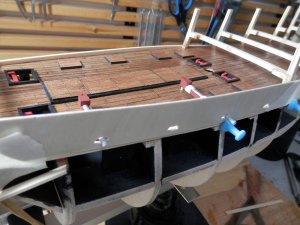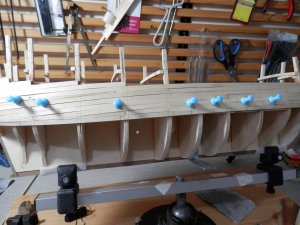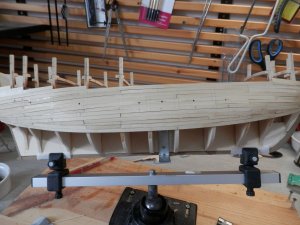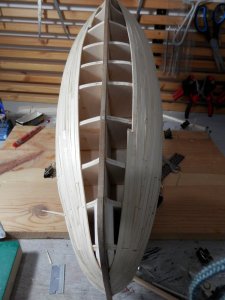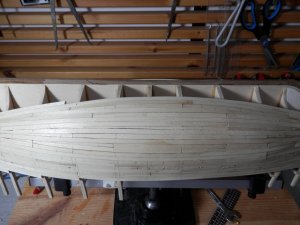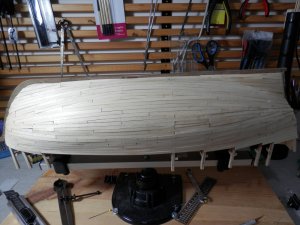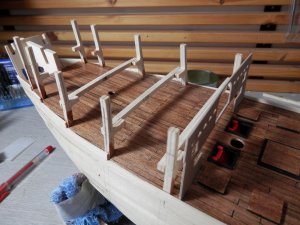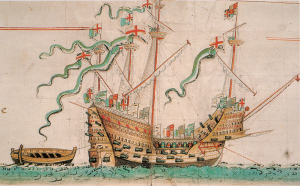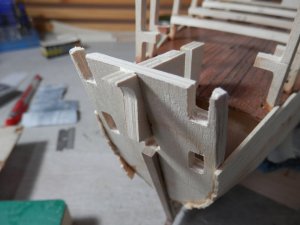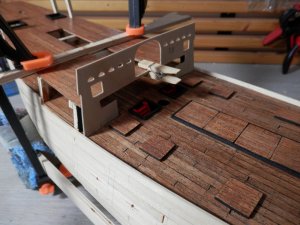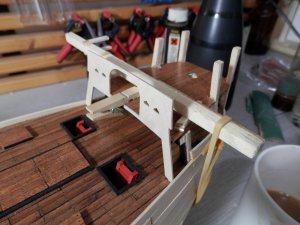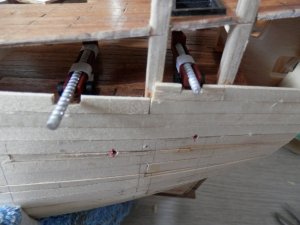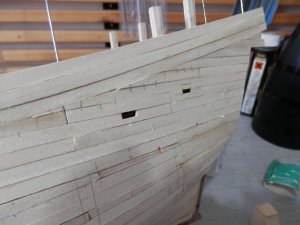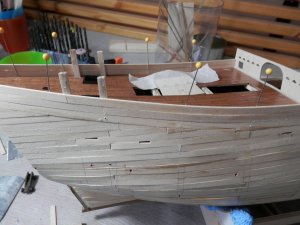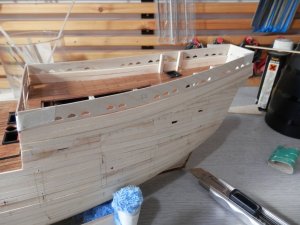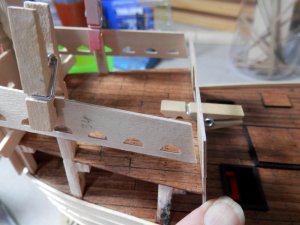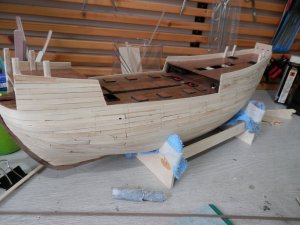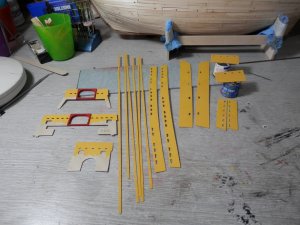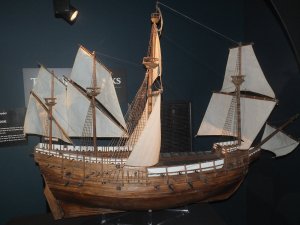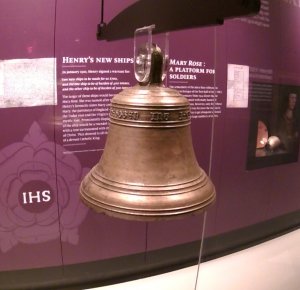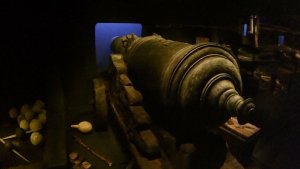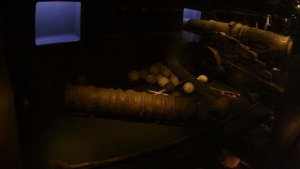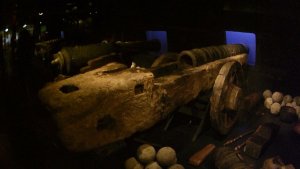Ladders now built-
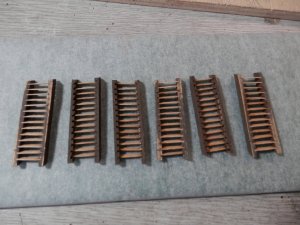
... and glued in place. I decided to paint them red in order that they can be seen (at least a little) -
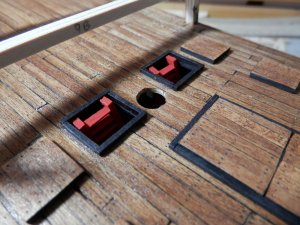
That's about all I need to do now and I need to build the cannon next to a point where I can use them to set the height of the gunwale. There are three types of breech or muzzle loaders, so the carriages were completed first -
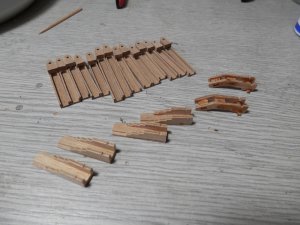

More work to be done yet on the barrels, so I'll cover that later in this log when I get to it. We're now ready to start planking -
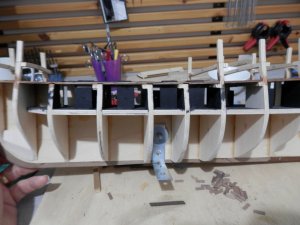
Some information on the various decks (from keel upwards) -
Hold - Estimated to have contained 102 tons of shingle ballast. This was dug locally as determined by analysis of the seashells it contains. Additionally ballast would have been provided by the myriad of other items stored in the hold. In the forward part of the hold a mortar slab was laid down and on top of this two log fired furnaces were built which contained two copper caldrons. These furnaces have been reconstructed at the Mary Rose museum and effectively used. 25 men were found in the hold.

Orlop Deck - Not included in the kit. Mainly used for storage, 20 men found in this area.
Main Deck - The black deck on my build and the lowest gun deck. It may be that the gunports being open on this deck caused the sinking as she heeled over. 15 men found on this deck, one of whom, by his bone structure, has been determined to have been an archer. Also found on this deck was the skeleton of a dog believed to have been a Wippet/Terrier cross and used for ratting. There were no cats on Tudor ships as they were thought to be bad luck.
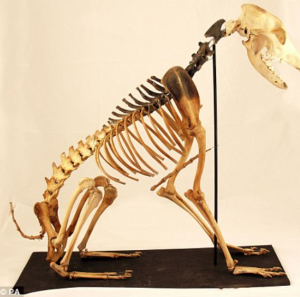
Upper Deck - 29 men found on this deck under the sterncastle which is thought to have been the crew living area. Pikes and archery equipment were found with them.

... and glued in place. I decided to paint them red in order that they can be seen (at least a little) -

That's about all I need to do now and I need to build the cannon next to a point where I can use them to set the height of the gunwale. There are three types of breech or muzzle loaders, so the carriages were completed first -


More work to be done yet on the barrels, so I'll cover that later in this log when I get to it. We're now ready to start planking -

Some information on the various decks (from keel upwards) -
Hold - Estimated to have contained 102 tons of shingle ballast. This was dug locally as determined by analysis of the seashells it contains. Additionally ballast would have been provided by the myriad of other items stored in the hold. In the forward part of the hold a mortar slab was laid down and on top of this two log fired furnaces were built which contained two copper caldrons. These furnaces have been reconstructed at the Mary Rose museum and effectively used. 25 men were found in the hold.

Orlop Deck - Not included in the kit. Mainly used for storage, 20 men found in this area.
Main Deck - The black deck on my build and the lowest gun deck. It may be that the gunports being open on this deck caused the sinking as she heeled over. 15 men found on this deck, one of whom, by his bone structure, has been determined to have been an archer. Also found on this deck was the skeleton of a dog believed to have been a Wippet/Terrier cross and used for ratting. There were no cats on Tudor ships as they were thought to be bad luck.

Upper Deck - 29 men found on this deck under the sterncastle which is thought to have been the crew living area. Pikes and archery equipment were found with them.
Last edited:




